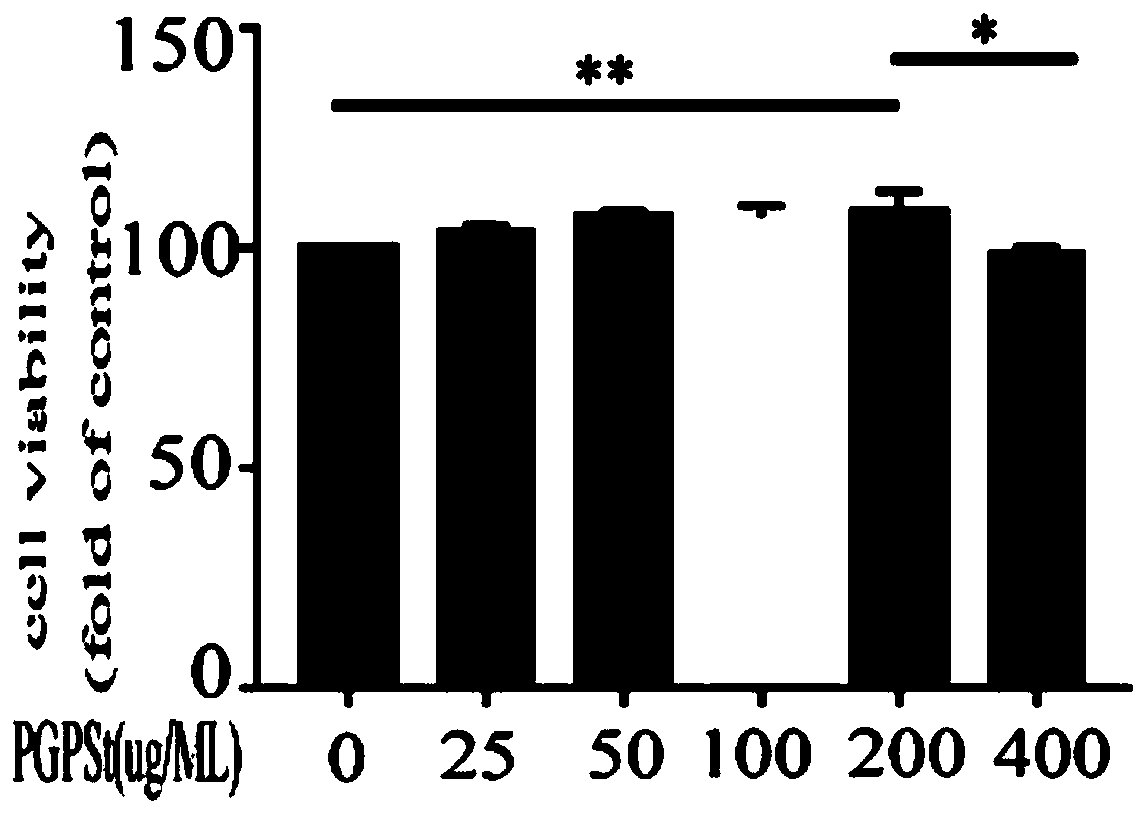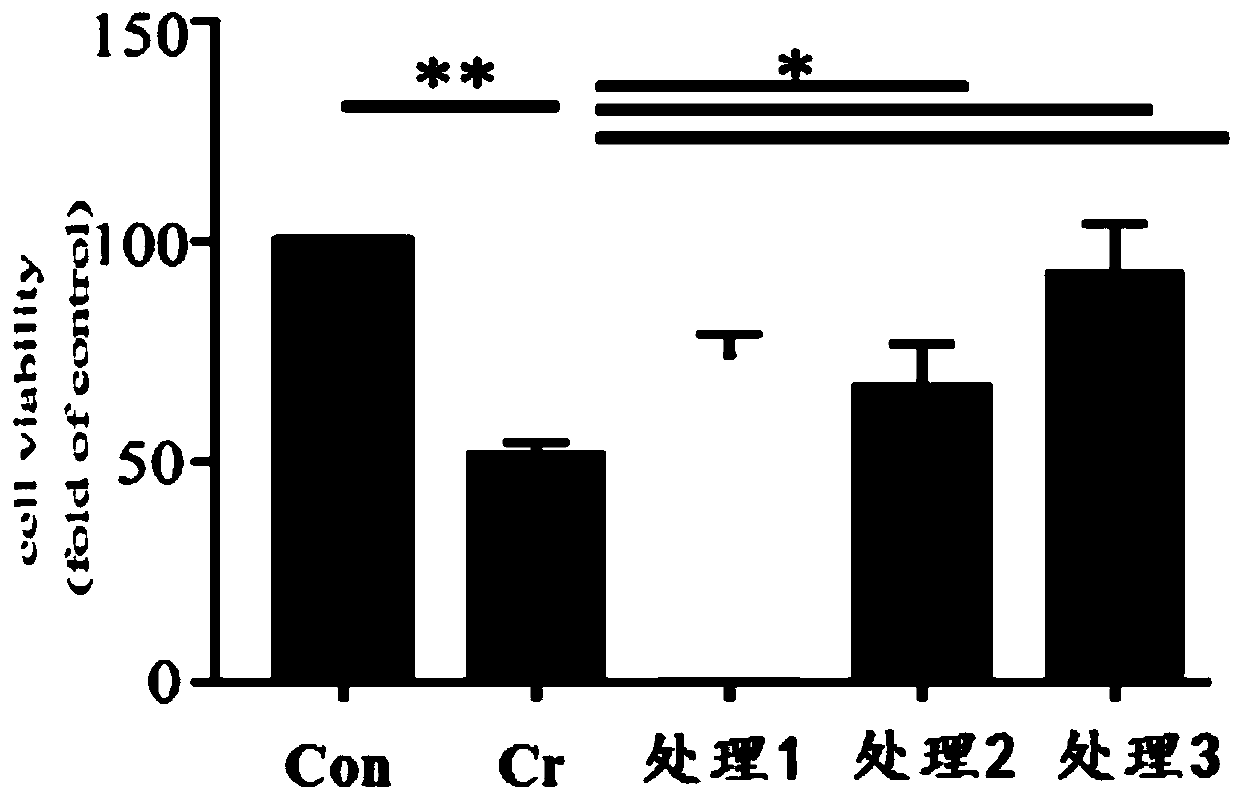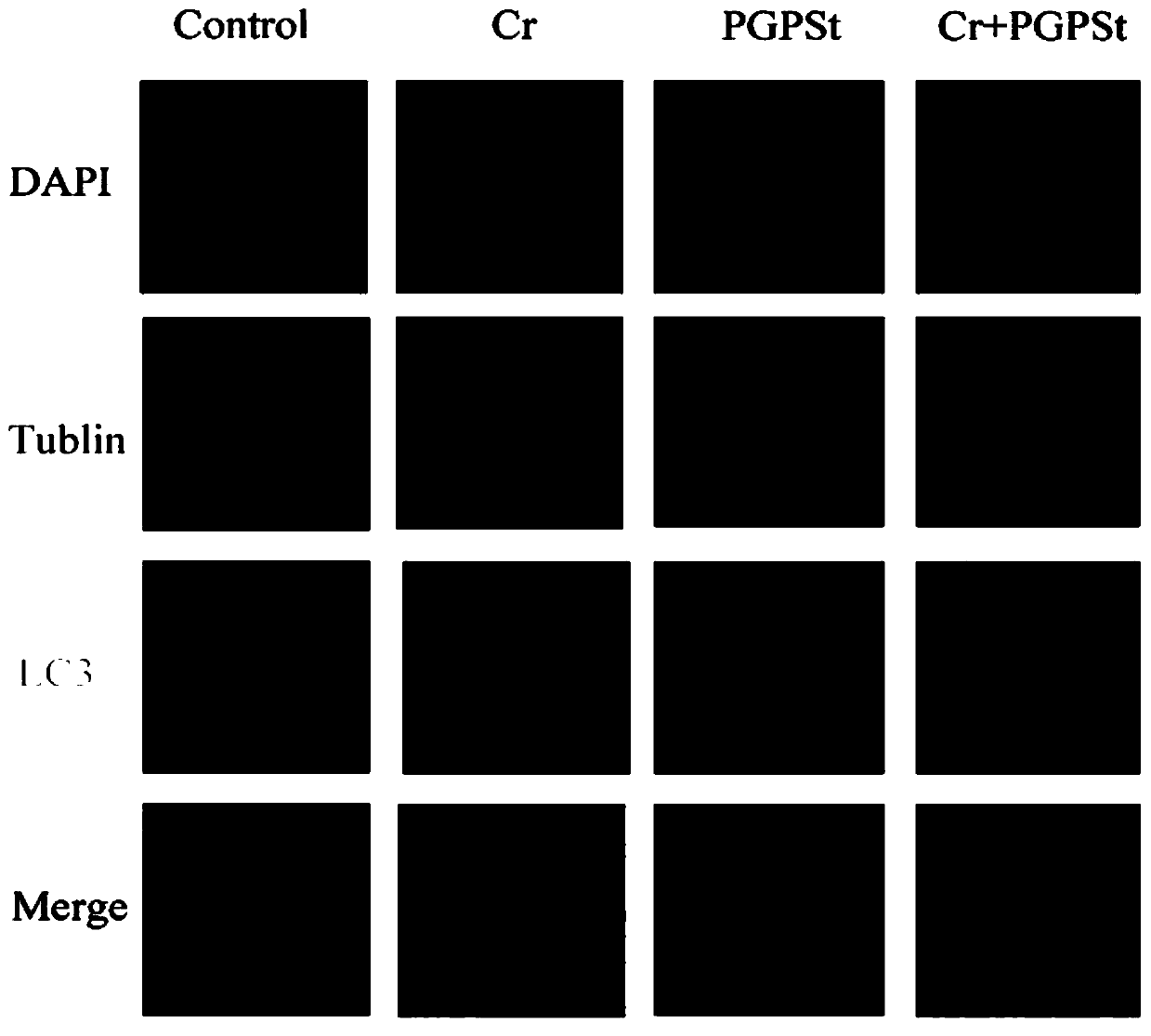Application of platycodon grandiflorum(Jacq)A .DC polysaccharide for preparing medicine capable of treating cellular damage caused by Cr(VI)
A technology of platycodon grandiflorum polysaccharide and cell damage, applied in the application field of medicine, can solve the problems such as cell damage of platycodon grandiflorum polysaccharide which have not yet been seen
- Summary
- Abstract
- Description
- Claims
- Application Information
AI Technical Summary
Problems solved by technology
Method used
Image
Examples
Embodiment 1
[0027] Embodiment 1: the preparation of bellflower polysaccharide
[0028] Take platycodon root decoction pieces, add 10 times the weight of water to soak overnight, then extract at 80°C for 4 hours, filter, concentrate the filtrate to a relative density of 1.05-1.15 (measured at 50°C), and centrifuge at 3000rpm for 10min to remove impurities. obtain the extract;
[0029] Add ethanol with a volume concentration of 95% to the extract, stir while adding, so that the final concentration of ethanol is 60%, let it stand for 24 hours, centrifuge, separate the precipitate, and dry the precipitate in vacuum at 60°C to obtain PGPS 60c .
[0030] Add ethanol with a volume concentration of 95% to the supernatant after separation and precipitation, stir while adding, so that the final concentration of ethanol is 80%, let stand, centrifuge, separate the precipitate, and dry the precipitate in vacuum at 60°C to obtain PGPS 80c .
[0031] PGPS 60c and PGPS 80c Mix according to the weigh...
Embodiment 2
[0032] Example 2: Investigation of the proliferation effect of bellflower polysaccharides on DF-1 cells
[0033] 1. Test method:
[0034] In order to study the influence of bellflower polysaccharides on DF-1 cells, the bellflower polysaccharides prepared in Example 1 were formulated into solutions of different concentrations, and the DF-1 cells were treated with different concentrations of bellflower polysaccharides for 12 hours, and the changes in cell viability were detected.
[0035] 2. Test results:
[0036] See the test results figure 1 ,Depend on figure 1 It can be seen that when the concentration is lower than 400 μg / ml, the platycodon polysaccharide prepared in Example 1 has no toxic effect on cells.
Embodiment 3
[0037] Example 3: Study on the protective effect of bellflower polysaccharides on DF-1 cell damage caused by Cr(VI)
[0038] 1. Test method:
[0039] The protective effect of Platycodon grandiflora polysaccharide on DF-1 cell injury caused by Cr(VI) was studied by CCK-8 method to detect cell viability.
[0040] Culture DF-1, and when the cell fusion degree reaches more than 80%, the cells (5×10 5 cells / well) to a 96-well plate (100 μL per well) and cultured for 24 h. The experiment was divided into five treatments, namely: Con group, Cr group, treatment group 1, treatment group 2 and treatment group 3; among them, the Con group was the blank control without treatment; the Cr group was treated with 40 μM Cr(VI) Cells for 6h; treatment group 1 with 40μM Cr(VI) and 200μg / ml PGPS 60c Treat cells for 6h; treat 2 groups with 40μM Cr(VI) and 200μg / ml PGPS 80c Treat the cells for 6h; treat 3 groups with 40μM Cr(VI) and 200μg / ml platycodon polysaccharide (PGPS 60c and PGPS 80c Ac...
PUM
| Property | Measurement | Unit |
|---|---|---|
| concentration | aaaaa | aaaaa |
Abstract
Description
Claims
Application Information
 Login to View More
Login to View More - R&D
- Intellectual Property
- Life Sciences
- Materials
- Tech Scout
- Unparalleled Data Quality
- Higher Quality Content
- 60% Fewer Hallucinations
Browse by: Latest US Patents, China's latest patents, Technical Efficacy Thesaurus, Application Domain, Technology Topic, Popular Technical Reports.
© 2025 PatSnap. All rights reserved.Legal|Privacy policy|Modern Slavery Act Transparency Statement|Sitemap|About US| Contact US: help@patsnap.com



